As you may have figured out from our last few blogs, the bad weather in Spain drug us down a bit before a couple of great days of sun and hiking rejuvenated us in beautiful Ronda. We were happy to see the sunny weather hold as we visited Granada, our final destination in Spain. Good thing too because Granada was a beautiful city to experience a pie (on foot).

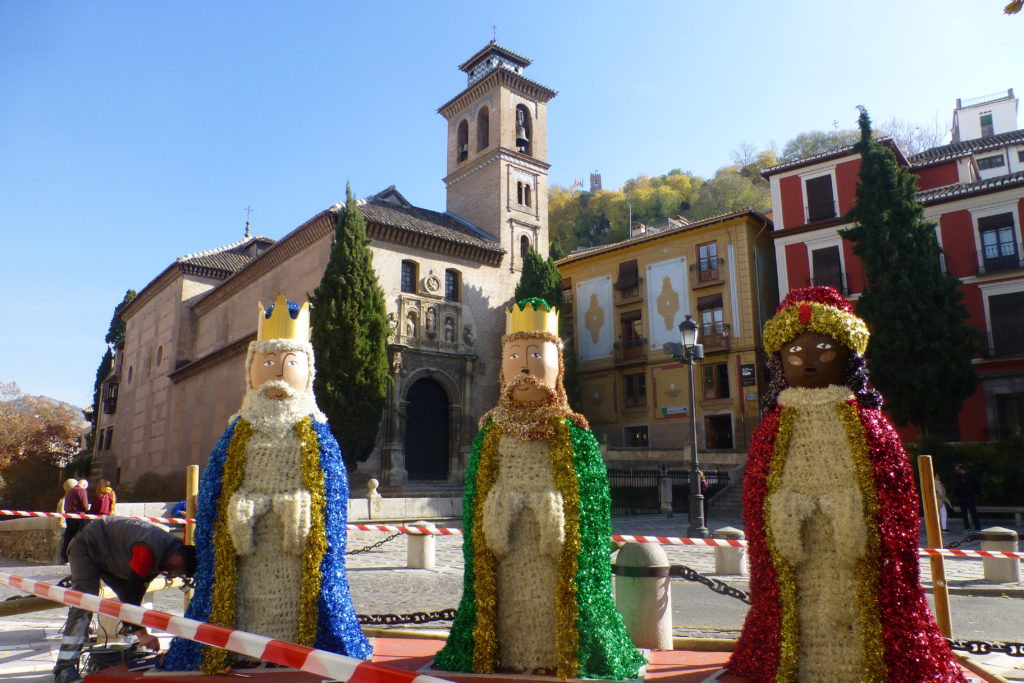
Our first full day in Granada was Thanksgiving, which meant…absolutely nothing (although Black Friday is a thing here). I was really hoping to witness an American accost some Spanish passerby in a slow, loud voice, “Do—you—have—tur—key—on—Thanks—giv—ing—in—your—coun—try?†Alas, I was disappointed and instead had to reflect on how thankful I was to be on this trip with Sarah.

We did have a funny experience that evening, though. Granada is one of the only Spanish cities that generally maintains the tradition of a free tapa with every drink; we went out for a glass of wine that evening and got a small plate of free salty fried fish bites. If you know Sarah, she was less than thrilled with the fish part. I finished my wine first and ordered a second glass…out came a slightly larger plate of fried sardines. A few minutes later Sarah decided to have a second glass also…this time accompanied by a plate of even bigger whole fried fish. I think I’m safe in saying this will be the only time I eat three plates of fried fish for Thanksgiving Dinner!
Granada was the final stronghold of the Moors in Spain before falling in 1492 about the same time that Columbus was sailing the ocean blue. Today’s old town doesn’t always seem that old, yet the city still bears much of the Mudejar influence in some places. Tio Rico (Rick Steves) notes in his guidebook the mistake it is to think of the Moors as a separate entity to the Spanish…they were in the country for 700 years (far longer than Romans, another group of conquerors that we romanticize instead). Think of how many generations of people were born and how much development a country would see in that amount of time. Moorish rulers may have been driven from power, but 700 years of people didn’t completely disappear from Spain. I thought it was a good way of changing my own perspective as I enjoyed the fountain-centered squares and minaret-turned bell towers around Granada.
After a morning touring old town’s mix of past and present, we enjoyed a different Moorish holdover—a good soak in the Hammam (Turkish bath). When we visited Turkey during our last trip, we did the whole process of being scrubbed and rinsed, a process that falls halfway between a rejuvenating spa experience and, um, waterboarding. This time, we chose to spend an hour moving between cold, warm, and hot tubs in a quiet, candle-lit, tiled and fountain-filled oasis. Sarah was her usual brilliant self and had found a great deal that came with 30-minute massages for next-to-nothing, so we left walking a little taller than we had in a month or so.
NO FOTO!!
Our main reason for coming to Granada was the Alhambra, a famously picturesque Moorish palace that covers 100,000 square meters of hillside overlooking the old town. We had tickets to see it the following day but took advantage of the afternoon sun to walk up to a good viewpoint for a sneak preview. It was crowded with selfie-snappers, Roma/hippy vendors, and bad Flamenco singers who passed the hat (propina por la musica?) after every single song, but the views were fantastic and left us excited for the next day.

We didn’t plan to save the best for last in Granada, but it certainly worked out that way. As with many of Spain’s top attractions, reserving timed entries is the only way to ensure admission, and the Alhambra sells out basically every day. Sarah had reserved tickets nearly a month in advance, and we planned everything else around it, not realizing that eventually it would work out that we’d see it on our last day in the country.
The Alhambra is the site of at least 7 palaces through the centuries and probably also hosted a fort as early as Roman times. It was the last stand for the Moors in Spain, and it is also the best-preserved major site from their time because it fell to the Christians without bloodshed. In its heyday, it was virtually a city by itself. Getting to it requires a grand parade up a pretty tree-lined hill, which apparently is part of the former walled city’s modern defense!

As with any important Muslim locale, water is a central design focus. The wonderful Courtyard of the Myrtles is built around a lovely long rectangular pool of reflective water. The buildings on the long sides of the courtyard once housed the sultan’s wives (four max), while the mistresses (as many “as could be maintained with dignityâ€) literally got the short ends. Because women couldn’t be seen outside, though, none of them got to hang out in the great patio like us. Another trademark characteristic is symmetry, which gave the courtyard a satisfying wholeness. In a niche at each corner, we got our first peaks at the stucco “stalactites†that appear throughout the palace; like much of the palace, they were originally painted brightly.
The Grand Hall of Ambassadors was my favorite room. Basically the throne room, it is the largest in the Alhambra. It is a perfect cube that feels even larger because of its open design below a giant dome decorated as a starry night sky, and effect achieved through 8,017 inlaid wooden pieces! If someone needed a reminder of the sultan’s closeness to Allah, he/she wouldn’t have to look far—“Allah is victorious†appears in calligraphy 9,000 times throughout the palace, and a good portion of those reminders are in the Grand Hall. It was, however, the place where Boabdil signed his surrender to the Christians and also where Columbus finished his sales pitch to Isabella—two important historical events that seem strangely unromantic for the grandeur of this room.

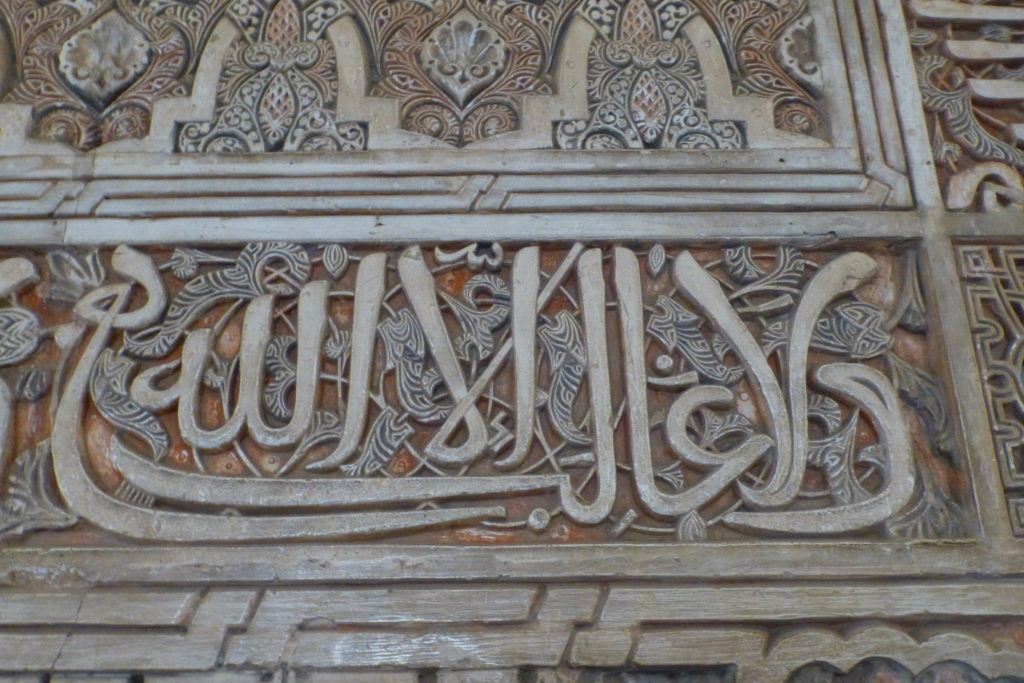
The Courtyard of the Lions may be the most popular sight in the palace. Its center fountain features 12 lions, so it doesn’t exactly deserve an award for most original name. Moors were good at math and engineering, and the fountain was a good example that sparked the curiosity of their Christian successors. They took it apart to see how it worked, and all the king’s horses and all the king’s men couldn’t put it back together correctly again! It’s actually only worked correctly for the past seven years. The rest of the courtyard was exotically tiled with designs of vines, geometrical patterns, and more Allah reminders…very pretty while also reducing heat in the hot summers.
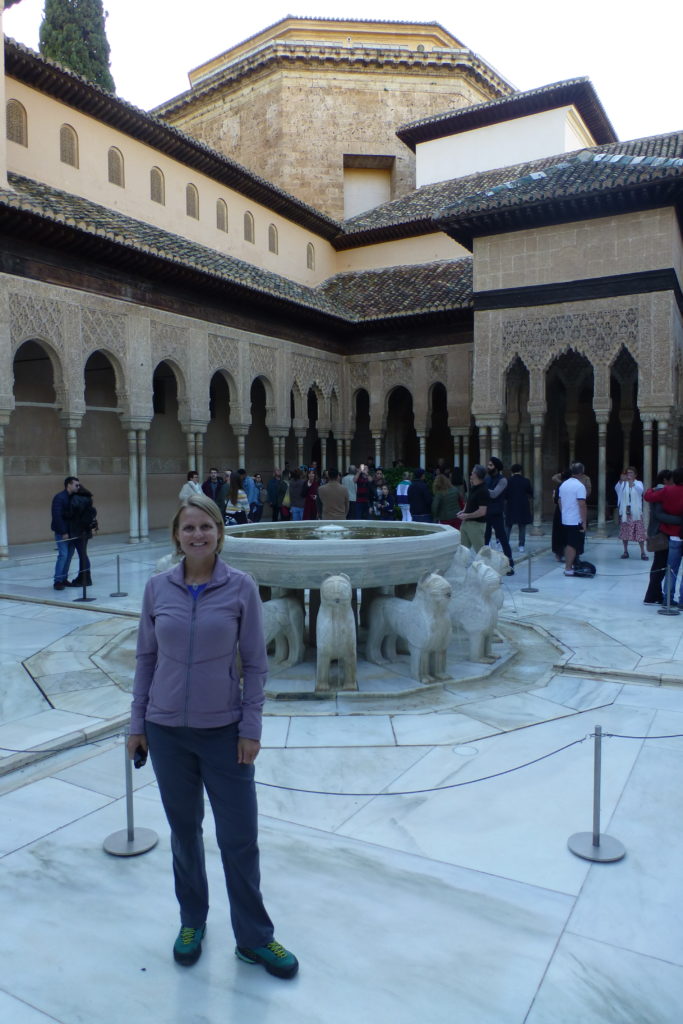

Before heading out, we enjoyed touring the pretty gardens; it was actually warm and dry enough to stroll around a bit for change. One last fun stop was called the Room of Secrets because of its great acoustics. You can stand in one corner and whisper into the wall, and your wife will be able to hear it by placing her ear against the opposite corner. Seems dangerous to me. It was a fun place to giggle a little before heading back down the hill while trying to avoid those murderous falling tree branches. Seriously, though, the Alhambra was a great exclamation point to our Spanish sightseeing!
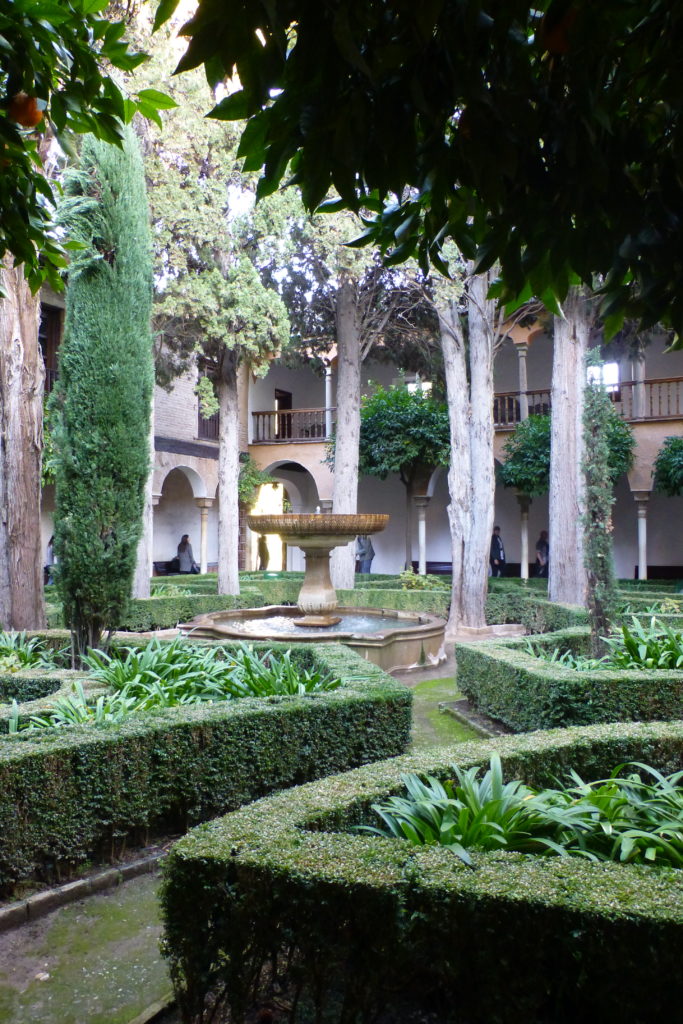
With all that sightseeing out of the way, we wanted a final night on the town before leaving Spain. We’d been trying to get into the most popular tapas bar in town for the past 3 days at this point, but it is the most packed place we’ve ever seen. Neither Sarah nor I are big fans of crowds, and Spanish people seem to require even less personal space than the rest of the non-North American world. Since half the town was at the Christmas tree lighting this evening, though, we thought we might be able to catch it when it was just incredibly busy instead of monumentally jammed. It worked out great, and we enjoyed a nice spot big enough for two people to stand at the bar and enjoy some tasty del Duerro crianza red wine with delicious tapas before heading out for the paseo among Granada’s shimmering Christmas lights!
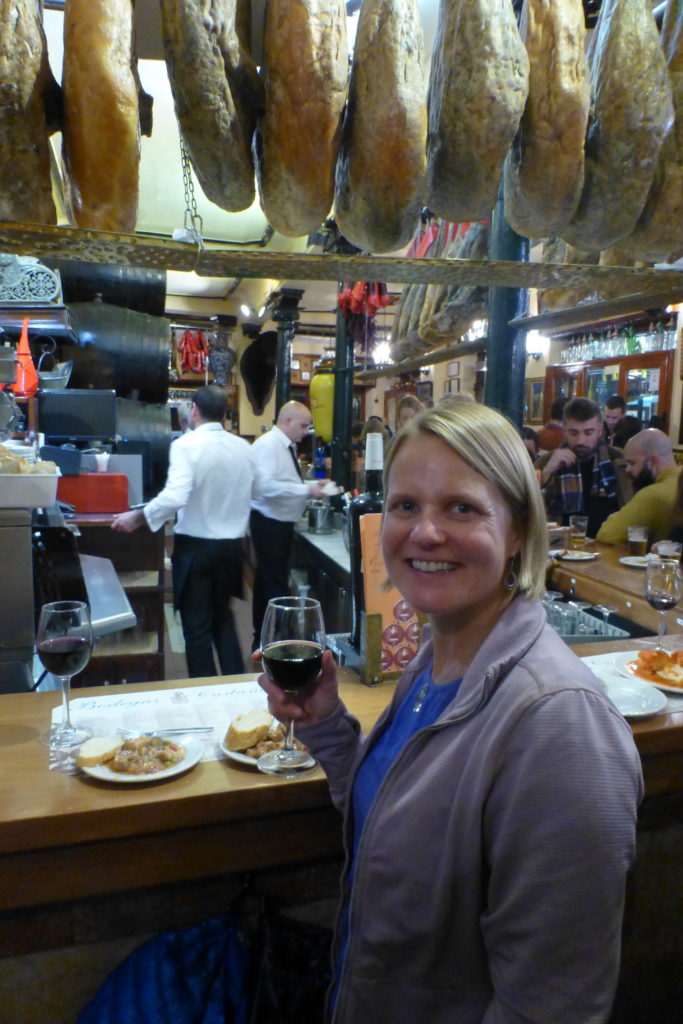
Spain did not quite live up to our elevated expectations, but we’ve also realized that those expectations were unrealistic for the last three weeks of November. Many of the things that appealed most to our personal interests when we originally started planning last year involved the outdoors—Basque shepherd country, mountain hikes or rock climbing, or maybe even some beach time. What we got instead were interesting cities and cultural experiences, a few disrupted plans and extra hours waiting out pouring rain and windstorms, two great days of hiking in Ronda, and a lifetime’s ration of jamon. Looking back, though, we had great experiences of some days and fun times almost every day. We may not have loved Spain, but we liked it quite a bit and are both happy that we went there. I don’t think anywhere else in Europe can give you quite the same experience as Espana, and that is not something that I have been able to say about every country here. For now, though, enough reflection…it’s time to move on to the Christmas markets and coffee shops of Vienna!
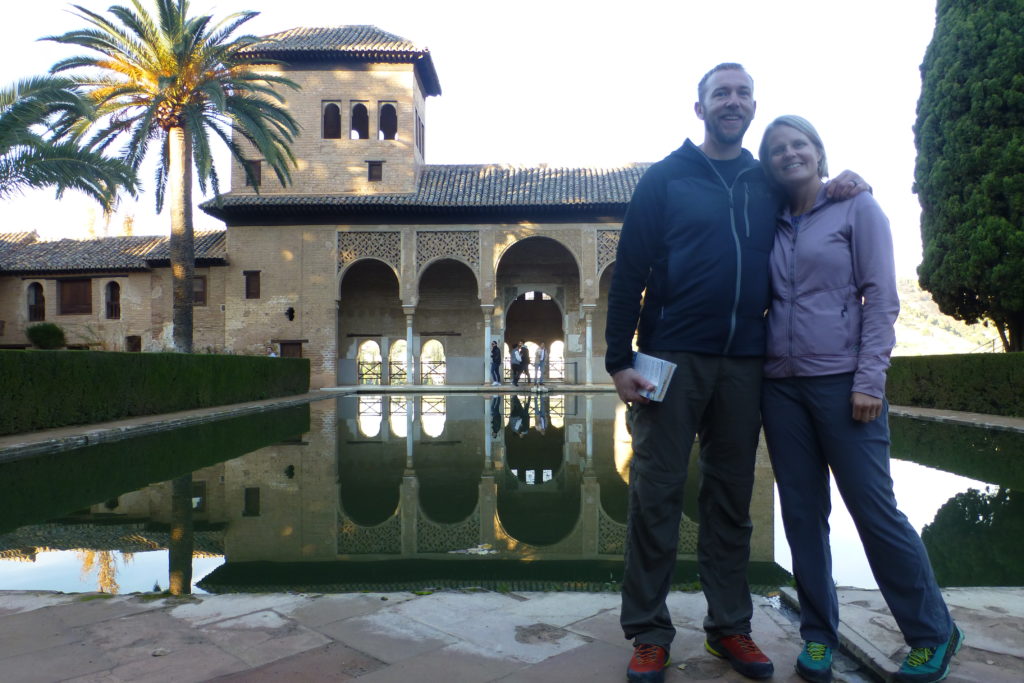


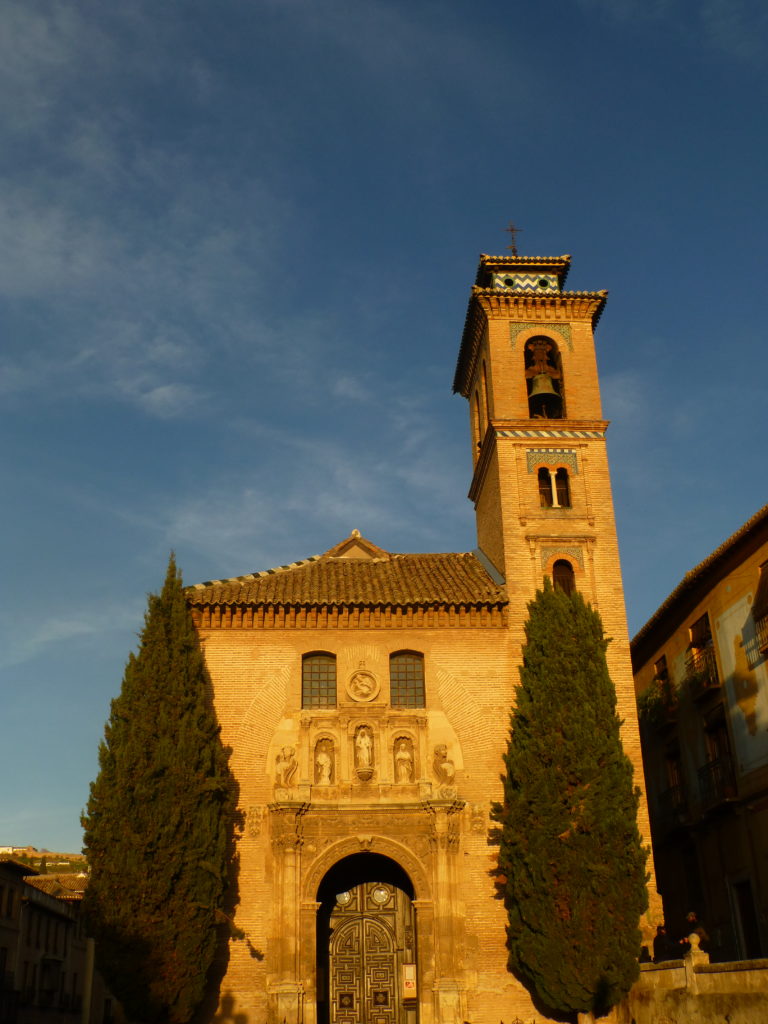
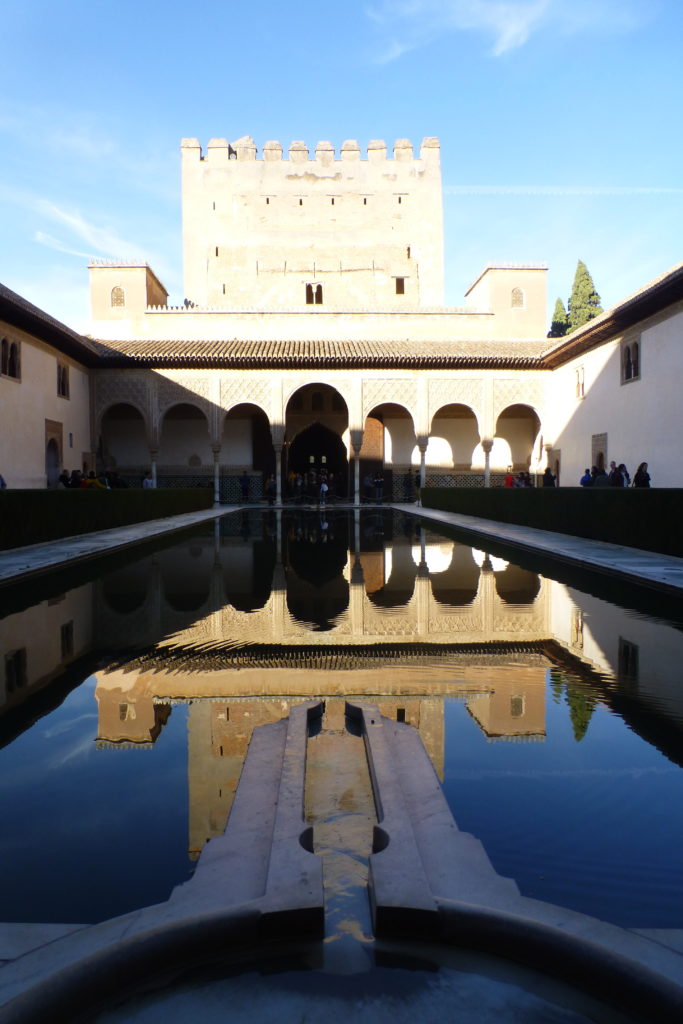
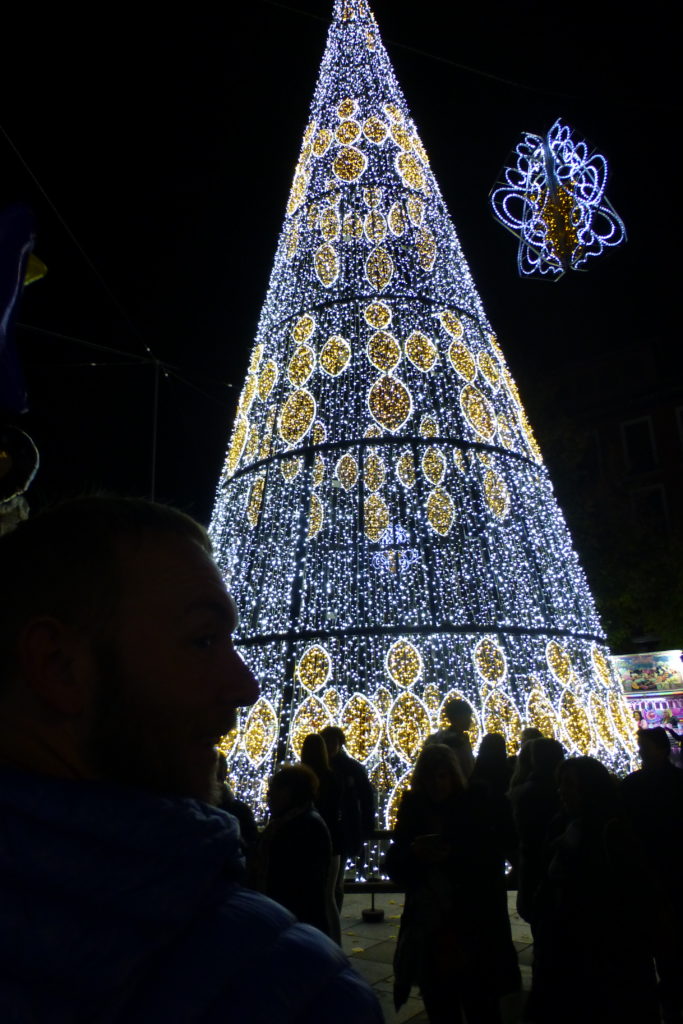
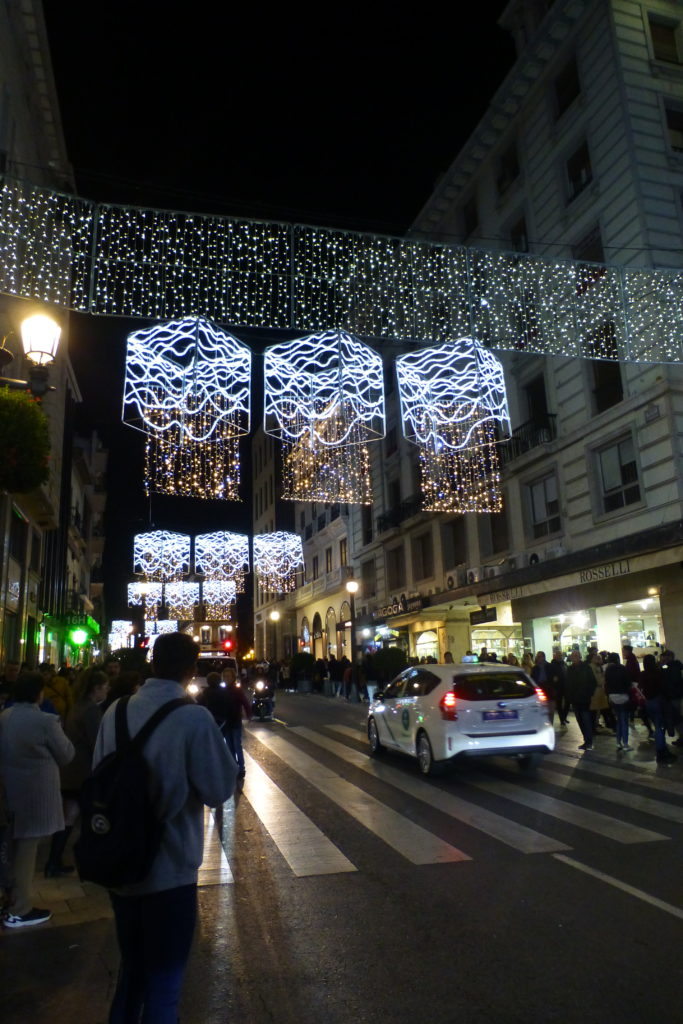
You two are amazing . So fun to read about your excursions. Glad you are taking notes so we know what to avoid, for instance 3 plates of fried fish.
Ha! We are taking notes from you as well!